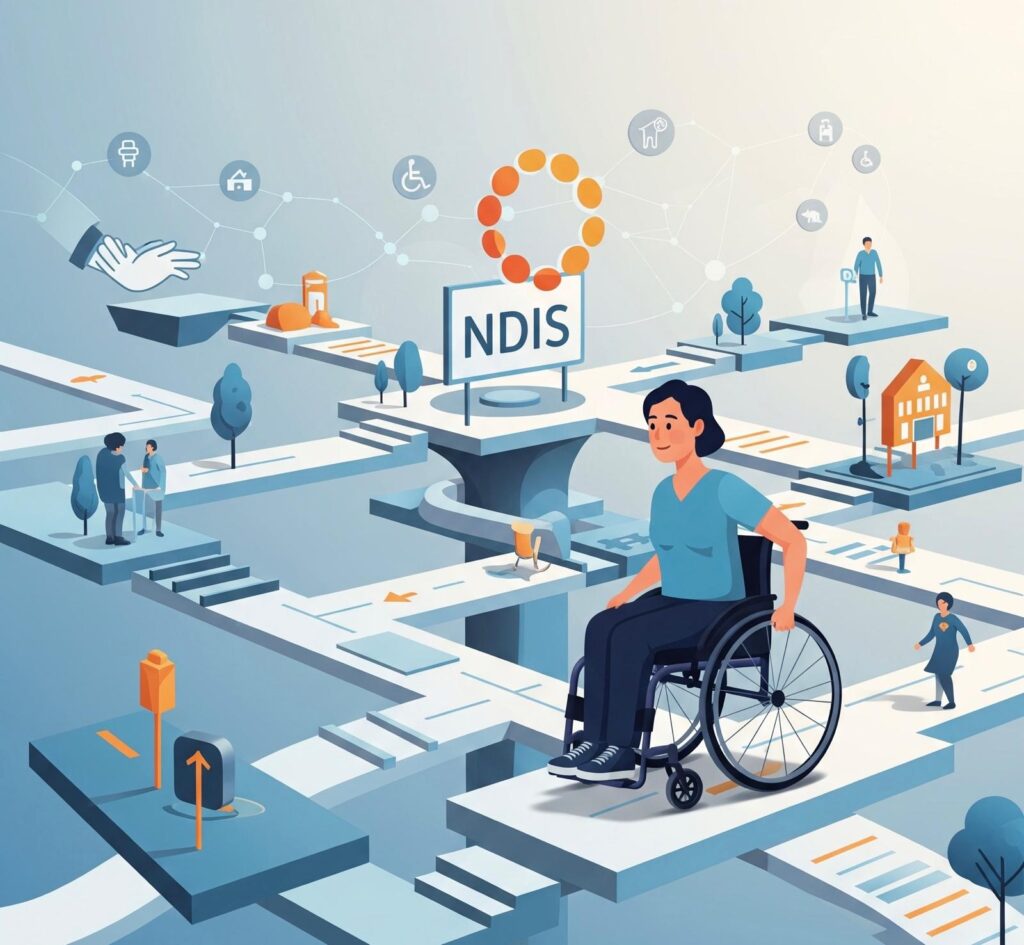Impulsivity and risk-taking are behaviours that can significantly impact an individual’s life, influencing decisions in various areas such as finance, relationships, and health. While these behaviours are often associated with adolescence, they can persist into adulthood and are linked to various psychological conditions. This article explores the psychology behind impulsivity and risk-taking, examining their causes, consequences, and the strategies that can help manage these behaviours effectively.
Keywords: impulsivity, risk-taking, psychology, impulsive behaviour, risk-taking behaviour, mental health, behavioural psychology, decision-making
What is Impulsivity?
Impulsivity refers to the tendency to act on a whim, without considering the consequences of one’s actions. It is characterised by a lack of forethought, an inability to delay gratification, and a tendency to engage in behaviours that are spontaneous and often risky. Impulsivity is a multi-faceted construct that can manifest in different ways, including cognitive impulsivity (acting without thinking), motor impulsivity (acting quickly without control), and non-planning impulsivity (a lack of future-oriented thinking) (Evenden, 1999).
1.1 Types of Impulsivity
- Cognitive Impulsivity: This involves making quick decisions without considering the potential consequences. Individuals with high cognitive impulsivity may struggle with decision-making and often act on their first thought without weighing alternatives (Evenden, 1999).
- Motor Impulsivity: This refers to the tendency to act quickly and impulsively, often leading to actions that are not well thought out. Motor impulsivity is common in situations requiring quick responses, such as reacting to an emotional trigger or making a split-second decision (Evenden, 1999).
- Non-Planning Impulsivity: This type of impulsivity involves a lack of consideration for future outcomes. Individuals who exhibit non-planning impulsivity may engage in behaviours that provide immediate gratification but have negative long-term consequences (Patton et al., 1995).
1.2 Impulsivity in Everyday Life
Impulsivity can manifest in various aspects of daily life, from minor decisions to significant actions that can have lasting impacts. Common examples include:
- Financial Decisions: Impulsive spending or gambling without considering the financial consequences.
- Eating Habits: Choosing unhealthy foods impulsively without considering the long-term effects on health.
- Substance Use: Engaging in drug or alcohol use impulsively, which can lead to addiction or other health problems.
- Social Interactions: Acting impulsively in social situations, such as saying something without thinking, which can strain relationships (Hofmann et al., 2008).
What is Risk-Taking?
Risk-taking refers to the willingness to engage in behaviours that involve potential danger or harm, with the understanding that the outcome is uncertain. Risk-taking can be beneficial in some contexts, such as in entrepreneurship or sports, where calculated risks can lead to significant rewards. However, excessive or poorly considered risk-taking can lead to negative consequences, such as financial loss, injury, or legal issues (Byrnes et al., 1999).
2.1 Types of Risk-Taking
- Physical Risk-Taking: Engaging in activities that have the potential to cause physical harm, such as extreme sports or reckless driving (Zuckerman, 1994).
- Social Risk-Taking: Taking risks in social situations, such as expressing unpopular opinions or engaging in behaviours that could lead to social rejection (Byrnes et al., 1999).
- Financial Risk-Taking: Making decisions that involve financial risk, such as investing in high-risk stocks or gambling (Weber et al., 2002).
- Emotional Risk-Taking: Engaging in behaviours that expose oneself to emotional harm, such as entering into a relationship despite known risks (Lauriola & Levin, 2001).
2.2 Risk-Taking in Adolescence
Risk-taking behaviour is particularly common during adolescence, a period marked by significant cognitive, emotional, and social development. During this time, individuals are more likely to engage in risky behaviours such as experimenting with substances, engaging in unprotected sex, or participating in dangerous activities. This increased propensity for risk-taking is partly due to the ongoing development of the prefrontal cortex, the area of the brain responsible for decision-making and impulse control (Steinberg, 2008).
The Psychological Factors Behind Impulsivity and Risk-Taking
Impulsivity and risk-taking are influenced by a complex interplay of psychological, biological, and environmental factors. Understanding these underlying factors can help in managing and mitigating these behaviours.
3.1 Biological Factors
- Genetics: Research suggests that impulsivity and risk-taking have a genetic component, with studies indicating that certain genes related to the dopaminergic system may influence these behaviours (Congdon & Canli, 2005).
- Brain Structure and Function: The prefrontal cortex, which is responsible for executive functions such as decision-making and impulse control, plays a key role in regulating impulsivity and risk-taking. Reduced activity or delayed development in this area can lead to increased impulsivity and a higher propensity for risk-taking (Steinberg, 2008).
3.2 Psychological Factors
- Personality Traits: Certain personality traits, such as sensation-seeking, low conscientiousness, and high levels of neuroticism, are associated with higher levels of impulsivity and risk-taking (Zuckerman, 1994).
- Emotional Regulation: Difficulties in regulating emotions can contribute to impulsive and risky behaviours. For instance, individuals who struggle with anxiety or anger may engage in impulsive actions as a way to cope with their emotions (Hofmann et al., 2008).
3.3 Environmental Factors
- Peer Influence: Social environments, particularly during adolescence, can have a significant impact on risk-taking behaviour. Peer pressure and the desire for social acceptance can lead individuals to engage in risky behaviours that they might otherwise avoid (Steinberg & Monahan, 2007).
- Life Experiences: Previous experiences, such as trauma or exposure to risk-taking models (e.g., parents or peers), can shape an individual’s propensity for impulsivity and risk-taking. For example, individuals who have experienced adverse childhood events may be more likely to engage in risky behaviours as adults (Anda et al., 2006).
Consequences of Impulsivity and Risk-Taking
While some level of impulsivity and risk-taking can be beneficial, excessive or poorly managed behaviours can lead to negative outcomes.
4.1 Health Consequences
- Substance Abuse: Impulsivity and risk-taking are significant predictors of substance use disorders. Individuals who engage in impulsive behaviours are more likely to experiment with drugs or alcohol and develop dependencies (Lejuez et al., 2010).
- Accidents and Injuries: Risk-taking behaviour, particularly physical risk-taking, increases the likelihood of accidents and injuries. This is especially true in activities such as extreme sports, reckless driving, and unsafe sexual practices (Byrnes et al., 1999).
4.2 Social and Emotional Consequences
- Relationship Strain: Impulsive decisions and risky behaviours can strain relationships with family, friends, and romantic partners. For instance, impulsive spending or gambling can lead to financial difficulties that impact the entire family (Hofmann et al., 2008).
- Legal Issues: Engaging in risky behaviours such as illegal drug use, driving under the influence, or other forms of reckless conduct can result in legal consequences, including fines, imprisonment, and a criminal record (Lejuez et al., 2010).
4.3 Financial Consequences
- Financial Instability: Impulsive spending and financial risk-taking can lead to significant financial instability, including debt, bankruptcy, and loss of assets. Individuals who engage in these behaviours may struggle to maintain financial security and achieve long-term financial goals (Weber et al., 2002).
Strategies for Managing Impulsivity and Risk-Taking
Effective management of impulsivity and risk-taking involves a combination of behavioural strategies, therapeutic interventions, and, in some cases, medication.
5.1 Cognitive-Behavioural Therapy (CBT)
Cognitive-behavioural therapy (CBT) is a widely used therapeutic approach for managing impulsivity and risk-taking. CBT helps individuals identify and challenge the thoughts and beliefs that drive impulsive and risky behaviours. Through CBT, individuals can develop healthier coping mechanisms, improve decision-making skills, and learn to delay gratification (Beck, 2011).
5.2 Mindfulness-Based Interventions
Mindfulness-based interventions, such as mindfulness meditation, can help individuals increase their awareness of impulses and develop greater control over their actions. Mindfulness practices encourage individuals to pause and reflect before acting, which can reduce impulsivity and promote more thoughtful decision-making (Tang et al., 2015).
5.3 Medication
In some cases, medication may be necessary to manage impulsivity and risk-taking, particularly when these behaviours are associated with underlying mental health conditions such as ADHD or bipolar disorder. Medications such as stimulants, mood stabilisers, and selective serotonin reuptake inhibitors (SSRIs) can help regulate mood and behaviour, reducing the likelihood of impulsive or risky actions (Goodwin & Jamison, 2007).
5.4 Environmental Modifications
Creating an environment that reduces the opportunities for impulsivity and risk-taking can be an effective strategy. This might involve removing triggers, setting clear boundaries, and implementing systems that encourage more deliberate decision-making. For example, using budgeting tools can help manage impulsive spending, while avoiding high-risk situations can reduce the likelihood of risky behaviours (Hofmann et al., 2008).
Conclusion
Impulsivity and risk-taking are complex behaviours influenced by a combination of biological, psychological, and environmental factors. While these behaviours can have positive outcomes in certain contexts, they often lead to negative consequences when poorly managed. Understanding the underlying causes of impulsivity and risk-taking is essential for developing effective strategies to mitigate these behaviours. Through a combination of therapy, mindfulness, medication, and environmental adjustments, individuals can learn to manage impulsivity and make more informed decisions, ultimately leading to healthier and more fulfilling lives.
References
- Anda, R. F., Felitti, V. J., Bremner, J. D., Walker, J. D., Whitfield, C., Perry, B. D., … & Giles, W. H. (2006). The enduring effects of abuse and related adverse experiences in childhood. European Archives of Psychiatry and Clinical Neuroscience, 256(3), 174-186.
- Beck, J. S. (2011). Cognitive behavior therapy: Basics and beyond (2nd ed.). Guilford Press.
- Byrnes, J. P., Miller, D. C., & Schafer, W. D. (1999). Gender differences in risk taking: A meta-analysis. Psychological Bulletin, 125(3), 367-383.
- Congdon, E., & Canli, T. (2005). The endophenotype of impulsivity: Reaching consilience through behavioural, genetic, and neuroimaging approaches. Behavioural and Cognitive Neuroscience Reviews, 4(3), 262-281.
- Evenden, J. L. (1999). Varieties of impulsivity. Psychopharmacology, 146(4), 348-361.
- Goodwin, F. K., & Jamison, K. R. (2007). Manic-depressive illness: Bipolar disorders and recurrent depression (2nd ed.). Oxford University Press.
- Hofmann, W., Friese, M., & Strack, F. (2008). Impulse and self-control from a dual-systems perspective. Perspectives on Psychological Science, 3(1), 162-176.
- Lejuez, C. W., Magidson, J. F., Mitchell, S. H., Sinha, R., Stevens, M. C., & De Wit, H. (2010). Behavioural and biological indicators of impulsivity in the development of alcohol use, problems, and disorders. Alcoholism: Clinical and Experimental Research, 34(8), 1334-1345.
- Lauriola, M., & Levin, I. P. (2001). Personality traits and risky decision-making in a controlled experimental task: An exploratory study. Personality and Individual Differences, 31(2), 215-226.
- Patton, J. H., Stanford, M. S., & Barratt, E. S. (1995). Factor structure of the Barratt Impulsiveness Scale. Journal of Clinical Psychology, 51(6), 768-774.
- Steinberg, L. (2008). A social neuroscience perspective on adolescent risk-taking. Developmental Review, 28(1), 78-106.
- Steinberg, L., & Monahan, K. C. (2007). Age differences in resistance to peer influence. Developmental Psychology, 43(6), 1531-1543.
- Tang, Y. Y., Hölzel, B. K., & Posner, M. I. (2015). The neuroscience of mindfulness meditation. Nature Reviews Neuroscience, 16(4), 213-225.
- Weber, E. U., Blais, A. R., & Betz, N. E. (2002). A domain-specific risk-attitude scale: Measuring risk perceptions and risk behaviours. Journal of Behavioral Decision Making, 15(4), 263-290.
- Zuckerman, M. (1994). Behavioral expressions and biosocial bases of sensation seeking. Cambridge University Press.
How to get in touch
If you or your NDIS participant need immediate mental healthcare assistance, feel free to get in contact with us on 1800 NEAR ME – admin@calmandcaring.com.







